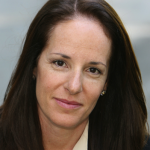What if Traditional Advertising Went Away?
My conversation with Denise Shiffman, the author of The Age of Engage
 After reading The Age of Engage by Denise Shiffman, I felt that it was one of those rare books that clearly explains the implications (for organizations) of adopting online marketing strategies. Having the opportunity to talk with Denise about her book and her perspectives was not only stimulating, but also, incredibly enlightening. The conversation started off with an excellent mental exercise when Denise posited, “What would you do if TV and print went away?”
After reading The Age of Engage by Denise Shiffman, I felt that it was one of those rare books that clearly explains the implications (for organizations) of adopting online marketing strategies. Having the opportunity to talk with Denise about her book and her perspectives was not only stimulating, but also, incredibly enlightening. The conversation started off with an excellent mental exercise when Denise posited, “What would you do if TV and print went away?”
This simple conjecture certainly focuses your mind in order to more clearly comprehend the paradigm shift that is happening in marketing, today. Basically, instead of marketing being a monologue, digital technologies have made it possible to have conversations with your customers: a proposition which can be frightening if the company in question isn’t a good “conversationalist.” According to Denise, if that happens to be the case and said company embarks on a social media strategy without anything interesting to talk about, it’s likely that few customers will engage (as has happened to some brands).
Denise explained that a social media strategy is much more than making use of some tools. It involves thinking about what your brand stands for and what you want to communicate. More importantly, it’s about being authentic and building trust and conversing with your prospects and customers where they happen to be. This is quite a change from traditional media where companies have been accustomed to controlling a specific message, which is relayed through a few well-established channels (e.g., print, television, etc.) to a mass audience. There’s only one problem as Denise pointed out, customers are listening less and less to these mass messages.
Thanks to her unique background which includes a degree in Sociology, a Masters in Business and stints as a Vice President of Marketing for companies such as Sun Microsystems, Denise brings her own distinct perspective to the intersection of marketing and digital technologies. Specifically, she finds the current convergence of people’s behavior and the state of technological development truly exciting. Even more, according to her, technology is actually allowing companies to behave more like real people.
When I brought up the Latin American market, she was quick to mention the fact that a country such as Brazil is known to have speedily adopted social networking technologies. Indeed, studies have shown that Latin Americans and Hispanics have great adopters of social networking and are among the most active networkers once they adopt these platforms.
User adoption is great, but why are so many companies in Latin America basically ignoring their users by not engaging them more on these platforms? When I asked Denise this, she relayed her observations from about seven years ago in the US, when social media was just ramping up. At that time, there was a notable generational gap between company directors (including CEO’s) and their younger workforce. While younger workers were blogging and adopting these technologies, many C-level executives were almost oblivious to the changes taking place. From what I’ve observed, a similar situation (there are some differences) is playing out in Latin America.
As Denise explained, the Internet offers an incredibly cost-effective, measurable platform for engaging customers. Ignoring this runs the risk of tarnishing your reputation, which is exactly what happened to Dell several years ago when customers filled the social networking “air waves” with tales of the company’s customer service failures. Back then, Dell was ill-prepared to respond to such communications and its image suffered as a result. Such situations have a way of hitting the bottom line relatively quickly and the company has since improved markedly in this area.
As Denise points out, there is a convergence of how people behavior and the maturation of digital technologies, which can only serve to accelerate the changes already underway. Even companies that one would not normally associate with the digital technology adoption such as Indium Corporation, a metal alloy and solder manufacturer, are engaging more deeply with customers through a well thought out blogging and online strategy. It’s up to Latin American companies whether they, too, wish to take advantage of these tools. The alternative is to bet exclusively on traditional media while their customers flock to digital media looking for interesting conversations.



